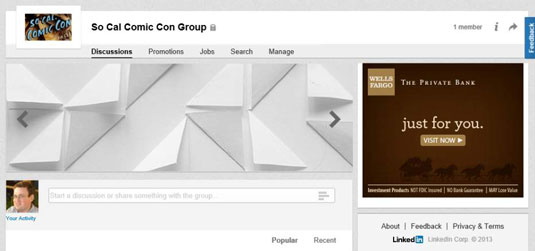
Other LinkedIn members can now reply and add to your opening post to form a discussion thread. Click the “Details” button to add background information relevant to the discussion. Click the “Link or News” button to add a URL to an external website, blog or online news story. Type the question, comment or statement that you want to use to build the discussion into the input box. Access the group by clicking on “Groups” and then “Your Groups” from the main menu.Ĭlick the “Discussions” tab at the top of the group’s home page. Approval is automatic for open LinkedIn groups for “members only” groups, LinkedIn will email you when the group’s moderator has approved your request to join. Review the search results to find a LinkedIn group relevant to the discussion you want to build.Ĭlick the “Join This Group” link beside the group title and description. Click on your industry in the “All Categories” pull-down menu or type a relevant keyword into the "Search Groups" input box. Select “Groups Directory” from the context menu. Additionally, mention your group and add a link at the end of your content marketing posts.Click the “Groups” link in the main navigation menu.
#CREATING LINKEDIN GROUPS PROFESSIONAL#
Include a link to your group on your organization’s website as well as your professional profiles.

This is always important, but especially in its early days before membership grows. Be active in the group you start: Be active in your new group to keep it filled with fresh content.It’s a way to become part of a network that’s just right for your brand. If you don’t find a LinkedIn group that’s a good fit, consider starting your own. It shows you’re interested in the opinions of others and it encourages continued conversation. Add a question at the end of your insights. Share Your Insights: Share insights on other’s posts, start discussions and add value to conversations in your LinkedIn groups.

You also have the option to search for specific organizations or interests like green living or sustainable agriculture. If you want to network in a specific industry, such as the automotive or health care industry, use those as search terms.

Find relevant groups: When hunting groups to join, you can search by industry, organization or shared interests.Just make sure the job openings you post are related to the focus of your group. The jobs don’t have to be with your company. So, knowing that other group members may be hunting new jobs, consider adding occasional jobs you find online. Build relationships: Keep in mind that one of the key purposes of LinkedIn is networking for job search purposes.Additionally, to be consistent, don’t distract members by straying from the group’s focus. Be active and consistent: Be active and consistent in terms of both post frequency and the topics you share.However, if you aren’t active in your groups, they aren’t going to add much value to your professional career.

Joining groups is a great way to increase your connections to others in your industry.


 0 kommentar(er)
0 kommentar(er)
